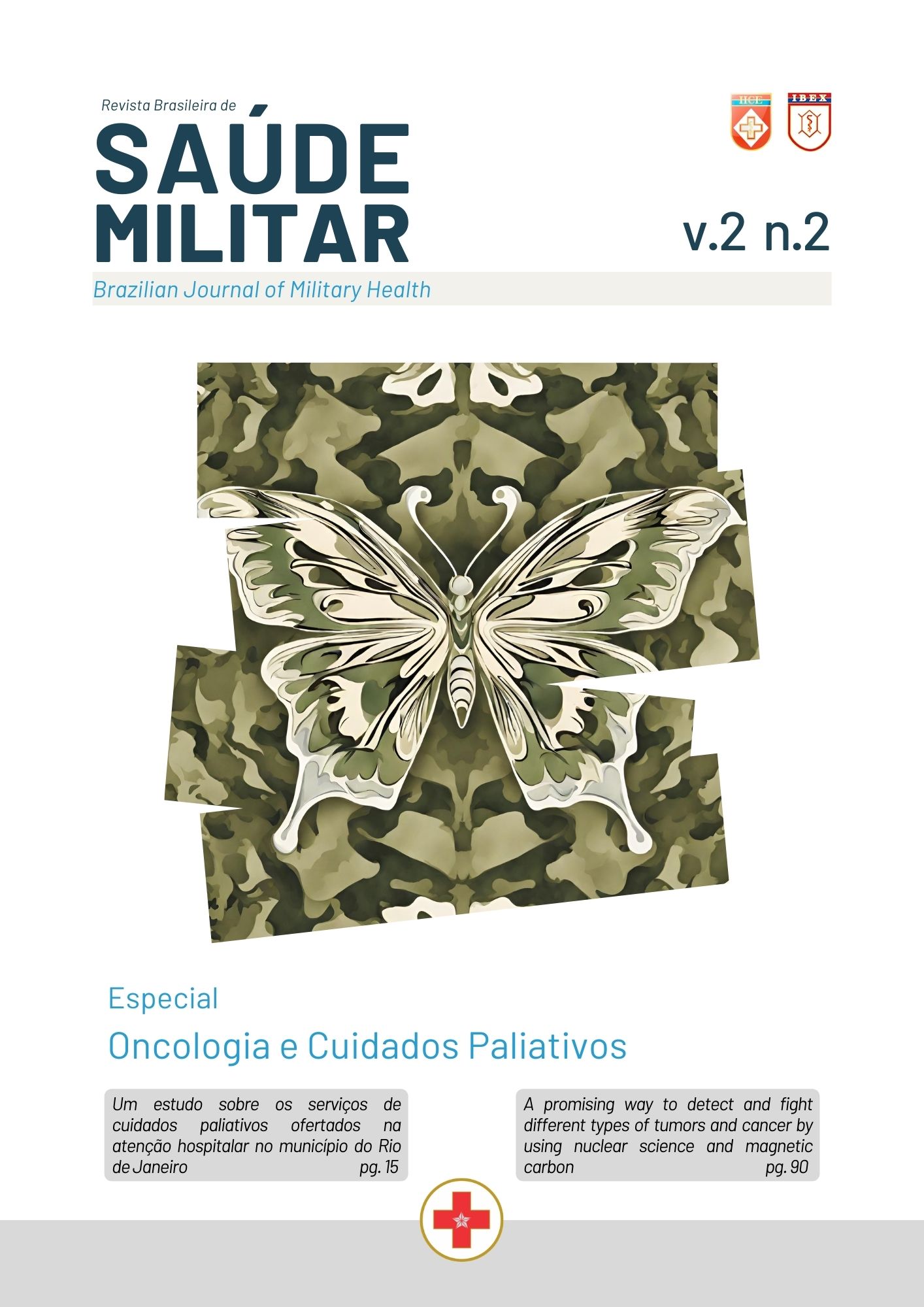A promising way to detect and fight different types of tumors and cancer by using nuclear science and magnetic carbon
Resumo
In this review of our own work, we show a promising way to detect and fight different types of tumors and cancer by using nuclear science and magnetic carbon. Almost two decades ago, we reported by the first time on a chemical route aiming to synthetize stable magnetic carbon/graphite. By using the Nuclear Magnetic Resonance (NMR) technique we have verified that its magnetism is an intrinsic property of this synthetized material and not originated from ferromagnetic impurities of any kind. Through direct measurement of the local magnetic field using Carbon-13 we have concluded that its magnetism is originated from defects in the structure. From its biocompatibility, we have been working in the use of magnetic carbon/graphite to deliver many compounds aiming to fight different diseases. Despite all scientific and technological advances of present days, cancer is a multifactorial and difficult to treat disease, killing hundreds of thousands of people a year worldwide. Therefore, the development of a new and efficient drug delivery system to fight cancer and biological agents – among other diseases - is as important as the discovery of a novel active molecule. In this work, we show the drug delivery system named MAGUS® (an acronym for Magnetic Graphite Universal System) we have built based on nanostructured magnetic carbon/graphite. This is an innovative and promising system composed by a biocompatible nanostructured particle of magnetic carbon/graphite functionalized with different molecules and materials. MAGUS®, depending on what we link to its structure, is so versatile and can be used to detect a wide range of specimens, from tumors and cancers to chemical and biological agents used as non-conventional weapons. That is why we call it universal. In the present work, MAGUS® will be acting as a biosensor, where the magnetic carbon/graphite is functionalized with radioactive particles of Iodine-131 and antibodies of different types of cancer. Then, by focusing on both the antigen-antibody interaction and the spatial guiding through an external magnetic field we are providing our drug delivery system a double way to detect and reach just the target. Based on these strategies, the functionalized magnetic carbon/graphite will reach only the neoplasm and not the surrounding healthy cells around. In a general view, it means that we are giving specificity to the MAGUS® drug delivery system as a pioneering and effective way to detect and treat cancers. We are also working on this unprecedented and efficient drug delivery system using the principles of Boron Neutron Capture Therapy (BNCT) with Boron-10 instead of Iodine-131. BNCT technique uses neutron as the external source and is frequently employed to treat specific tumors that are radioresistant or very difficult to kill using conventional radiation therapy. In summary, we show here by the first time that our Magnetic Graphite Universal System associated with nuclear techniques can be successfully used as a biosensor to detect and fight cancers and tumors with powerful features that conventional delivery drugs systems and other treatments do not have at all.
Downloads
Referências
GPT-4 Heralds An Enormous Productivity Boost, And A Wrenching Transformation Of Work (forbes.com) (consulted in March, 2023).
Cancer statistics, 2022 - PubMed (nih.gov) (consulted in March 2023).
Cancer (who.int) (consulted in March 2023).
A. W. Mombrú, H. Pardo, R. Faccio, O. F. De Lima, E. R. Leite, G. Zanelatto, A. J. C. Lanfredi, C. A. Cardoso, and F. M. Araújo-Moreira (2005); Multilevel ferromagnetic behavior of room-temperature bulk magnetic graphite; Phys. Rev. B (Rapid Comm.) 71, 100404(R).
6. H. Pardo, R. Faccio, F. M. Araújo-Moreira, O. F. De Lima, A. W. Mombrú (2006); Synthesis and characterization of stable room temperature bulk ferromagnetic graphite; Carbon 44; 565–569.
N. S. Souza, S. Sergeenkov, C. Speglich, V. A. G. Rivera, C. A. Cardoso, H. Pardo, A. W. Mombrú, A. D. Rodrigues, O. F. De Lima, and F. M. Araújo-Moreira (2009); Synthesis, characterization, and magnetic properties of room-temperature nanofluid ferromagnetic graphite; Appl. Phys. Lett. 95, 23, 233120.
Jair C. C. Freitas, Wanderlã L. Scopel, Wendel S. Paz, Leandro V. Bernardes, Francisco E. Cunha-Filho, Carlos Speglich, Fernando M. Araújo-Moreira, Damjan Pelc, Tonči Cvitanić, Miroslav Požek (2015); Determination of the hyperfine magnetic field in magnetic carbon-based materials: DFT calculations and NMR experiments; Nature Scientific Reports 5, 1, 1-9.
Lígia N. M. Ribeiro, Ana C. S. Alcântara, Margarita Darder, Pilar Aranda, Paulo S. P. Herrmann Jr, Fernando M. Araújo-Moreira, Mar. García-Hernández, Eduardo Ruiz-Hitzky (2014); Bionanocomposites containing magnetic graphite as potential systems for drug delivery; Int. J. Pharm. 477; 553–563.
N. S. Souza, S. Sergeenkov, A. D. Rodrigues, C. A. Cardoso, H. Pardo, R. Faccio, A. W. Mombrú, J. C. Galzerani, O. F. De Lima and F. M. Araujo-Moreira (2012); Stability issues and structure-sensitive magnetic properties of nanofluid ferromagnetic graphite; J. of Nanofluids 1, pp. 143–147.
N. S. Souza, A. D. Rodrigues, C. A. Cardoso, H. Pardo, R. Faccio, A. W. Mombru, J. C. Galzerani, O. F. De Lima, S, Sergeenkov and F. M. Araujo-Moreira (2012); Physical properties of nanofluid suspension of ferromagnetic graphite with high Zeta potential; Phys. Lett. A 376, 4, 544-546.
F. M. Araujo-Moreira and N. F. G. Serrano (2022); Stable Room-Temperature Magnetic Carbon Graphite: From Discovery to Bionanotechnological Applications; Research and Development in Material Science 17, 2.
K. Abbas, F. Simonelli, U. Holzwarth, P. Gibson (2009); Overview on the production of radioactive nanoparticles for bioscience applications at the JRC Cyclotron – European Commission; Journal of Labelled Compounds and Radiopharmaceuticals; 52, S231–S255.
V. Kiseleva, K. Gordo, P. Vishnyakova, E. Gantsova, A. Elchaninov, and T. Fatkhudinov; Particle Therapy: Clinical Applications and Biological Effects (2022); Life 12, 2071.
Y. Matsumoto, N. Fukumitsu, H. Ishikawa, K. Nakai, and H. Sakurai (2021); A Critical Review of Radiation Therapy: From Particle Beam Therapy (Proton, Carbon, and BNCT) to Beyond; Journal of Personalized Medicine, 11, 825.


